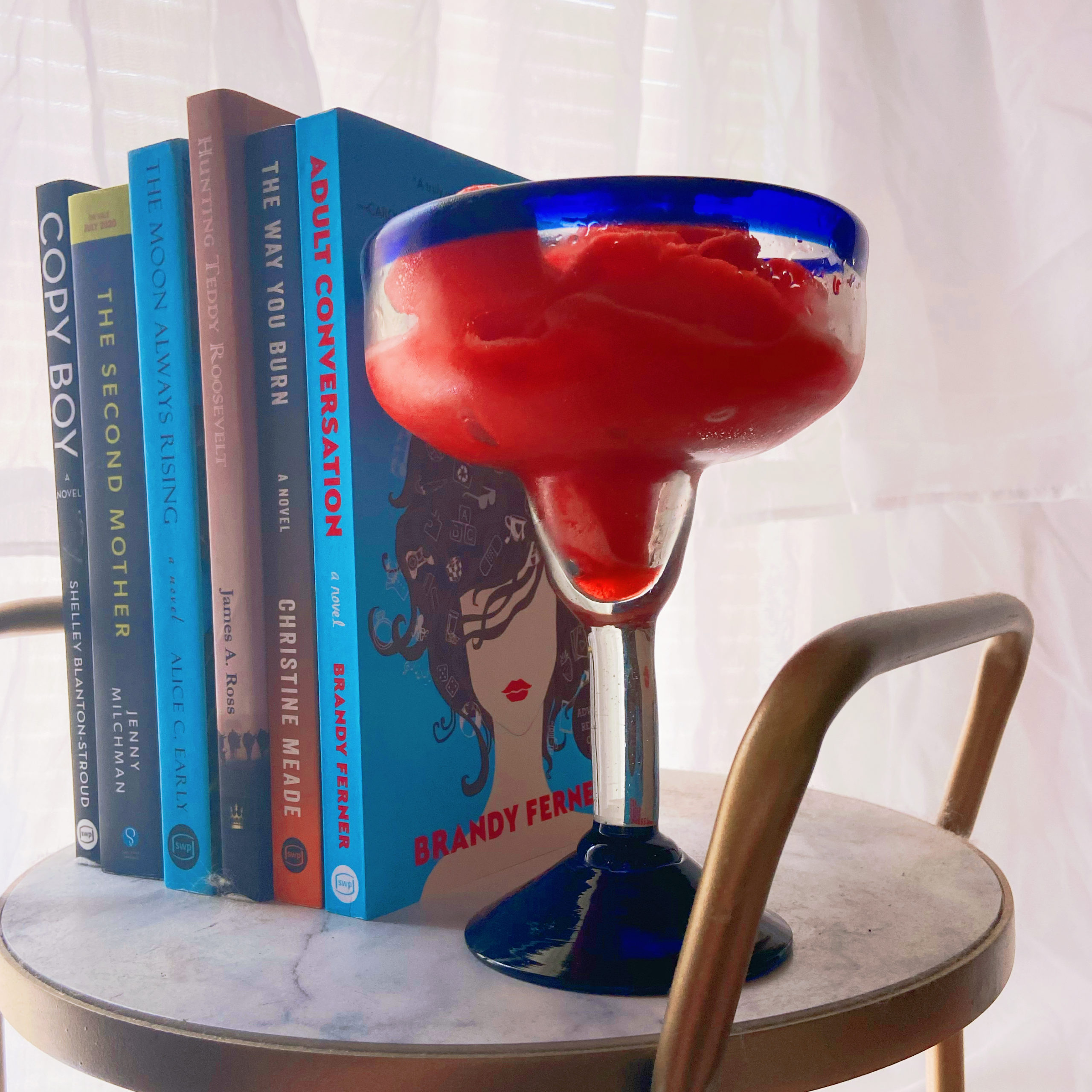
Summer is here, and we’ve created the perfect pairings of this season’s hottest summer reads with cool, delicious summer cocktails! Relax and enjoy with our Boozy Books List for Summer 2020, and share pics of your favorite pairings with us via Instagram and Twitter!
 Kick back with the girls and enjoy a drink that’s as sweet and sassy as the novel it’s paired with, which has been hailed as “the perfect beach read” that “makes the Real Housewives look like Girl Scouts.”
Kick back with the girls and enjoy a drink that’s as sweet and sassy as the novel it’s paired with, which has been hailed as “the perfect beach read” that “makes the Real Housewives look like Girl Scouts.”
What you’ll need: Light rum, lemons, mint leaves, water, sugar, dried lavender — Get the recipe
About the book: Dip behind the curtain of luxury and glamour as you follow Nadia Demidova, doyenne of the elite Palm Springs spa and her difficult, wealthy guests: a burned out Fifth Avenue retail executive, a striking former model and Chicago socialite, an overweight Texas housewife and her beautiful teenage daughter, and a CEO-turned-recluse due to botched plastic surgery. In the privacy of the spa, the women reveal their insecurities and secrets. But when ownership of the spa is suddenly up for grabs–and an uber-eligible man is thrown into the mix–things take a scandalous turn as friendship and ambition collide. Sexy, funny, and heartfelt, this is a “charming novel about women at a crossroads and the desires that they hide under their beautiful surfaces.” (Foreword Reviews).
Release date: May 7, 2020, Black Rose Writing
 Transport yourself with any of these delicious Caribbean cocktails, and bask in this gripping, gorgeous romance set on the beautiful Caribbean island of Nevis (a neighbor of the isle of St. Lucia!). Ah, the beach is calling.
Transport yourself with any of these delicious Caribbean cocktails, and bask in this gripping, gorgeous romance set on the beautiful Caribbean island of Nevis (a neighbor of the isle of St. Lucia!). Ah, the beach is calling.
What you’ll need: Light or dark rum, orange juice, pineapple juice, lime juice, grenadine syrup, cinnamon, nutmeg, angostura bitters, simple syrup — Get the recipe
About the book: Perfect for travelers and lovers of romantic literary fiction, the novel sweeps readers from the highlands of Scotland to the lush Caribbean island of Nevis, following fiery Eleanor “Els” Gordon, whose life is cracking apart after the loss of her fiance. Starting over in a derelict Nevis plantation house, Els discovers she’s not alone: the “jumbie” or ghost of former owner Jack Griggs still haunts the property. Jack asks Els to help him make amends for wrongs committed during his Casanova life, and in exchange he appoints himself Cupid on her behalf. But when her past comes calling, Els must choose her own future. Set in the vibrant tropics, here is a multi-layered love story about the meaning of home and the power of forgiveness.
Release date: April 21, 2020, She Writes Press
 This summer cocktail tastes delicious, but beware: the sweetest fruit has thorns, just as this heart-pounding suspense novel reveals when 20-year-old Tara escapes her abusive home life and joins her ideal virtual family–only to discover that “perfect” can be deceiving.
This summer cocktail tastes delicious, but beware: the sweetest fruit has thorns, just as this heart-pounding suspense novel reveals when 20-year-old Tara escapes her abusive home life and joins her ideal virtual family–only to discover that “perfect” can be deceiving.
What you’ll need: Gin, blackberry liquor (optional), blackberries, lemon juice, simple syrup, ginger beer or soda — Get the recipe
About the book: Adopted by her controlling foster mother at the age of eight, twenty-year-old Tara has seen little of the outside world. Lonely, punished for the slightest offense, her only distraction comes from watching the Feely family’s online videos. They’re an affectionate vlogging quintet and an internet sensation. And when Tara accepts an internship with the close-knit clan, they’re her escape. Daring to run away, and defying Mother’s rules, Tara is welcomed into the loving fold. But the more Tara gets to know them, the more she realizes that not everything is as it seems. As secrets slowly surface, the image of the perfect family begins to crack. To claim a life of her own, she’ll need a new escape plan. Because as the show’s popularity explodes, reaching even more fascinated viewers, Tara can’t shake the feeling that Mother is among their ranks. She’s watching. She’s waiting. She’ll never let her go.
Release date: March 17, 2020, Lake Union Publishing
 This spicy citrus cocktail burns so good, just like this gripping debut thriller that weaves a twisting tale of romance, arson, and buried secrets set in a cabin deep in the New Hampshire woods.
This spicy citrus cocktail burns so good, just like this gripping debut thriller that weaves a twisting tale of romance, arson, and buried secrets set in a cabin deep in the New Hampshire woods.
What you’ll need: Blood orange juice, Agave, whiskey, and jalapeno — Get the recipe
About the book: When David finds his cabin engulfed in flames, he knows his girlfriend Hope set the fire. At least, he’s pretty sure he knows. Ever since David abandoned his former life to “rough it” for a year in the cabin his grandfather willed to him, life has been stranger than he expected–especially when he accidentally digs up clues to a buried family secret. As the nights lengthen, he can’t shake the feeling that he’s being watched through the trees. And then there’s the woman he loves—Hope—whose dark past is written in scars covering her body. As they tangle together, everything he thought he knew will be burned away–but what will he find among the ashes?
Release date: April 14, 2020, She Writes Press
 Fresh Spanish sangria brimming with summer fruit is the perfect match for this delightful romantic comedy (with a touch of magical realism), which sends protagonist Callie on a life-changing adventure to Spain after she receives a mysterious phone call from Ernest Hemingway.
Fresh Spanish sangria brimming with summer fruit is the perfect match for this delightful romantic comedy (with a touch of magical realism), which sends protagonist Callie on a life-changing adventure to Spain after she receives a mysterious phone call from Ernest Hemingway.
What you’ll need: Chilled pinot noir or Garnacha wine, brandy, an orange, seasonal fruit, lemon slices, maple syrup or alternative sweetener, ice — Get the recipe
About the book: Overachieving New York lawyer Callie McGraw has six months between jobs and a hefty severance check when she is called to Spain by Ernest Hemingway. She begins packing her bags for the sun-kissed streets that night. Starting in Barcelona, Callie embarks on a six-month escapade of a lifetime, a whirlwind of Spanish food, wine, art and dancing, with a revolving cast of friends and lovers keeping her company in each new locale. Callie’s next cocktail is never far away, but Hemingway knows her secrets, the demons that plague her deep down. With each mysterious call and each enigmatic clue, Hemingway challenges her to face her greatest fears and embrace life on her own terms. A vividly drawn ode to both Spanish culture and the soul-striking spark of a good book, Finding Hemingway showcases the empowering story of one woman’s journey to self-acceptance and fulfillment.
Release date: July 7, 2020, Cloister Inn Publishing
 This Prohibition-era classic is as refreshing and no-frills as it gets–and definitely a drink our tough-as-nails protagonist Jane would have swilled while posing as a man at her newspaper job in this Depression-era noir thriller.
This Prohibition-era classic is as refreshing and no-frills as it gets–and definitely a drink our tough-as-nails protagonist Jane would have swilled while posing as a man at her newspaper job in this Depression-era noir thriller.
What you’ll need: Gin (naturally!), fresh limes, and soda water. BOOM — Get the recipe
About the book: Hailed as “Raymond Chandler for feminists,” Copy Boy follows the ferocious Jane who, in a desperate bid to survive the Depression, dons a new identity as a man to fake her way into work at a newspaper. Jane must learn to thrive in a man’s world, where her success in a job that hunts for the truth depends on how well she can lie. She’ll do whatever it takes–which is a very good thing, because the past she thought she killed (in more ways than one) is coming for her.
Release date: June 23, 2020, She Writes Press
 This surprisingly light and fresh summer cocktail is a perfect match for this hysterical YA rom-com about Kate and Nate, two coworkers at a zombie-themed escape room who team up to compete in a survivalist weekend competition–but the real challenge will be keeping their hearts intact.
This surprisingly light and fresh summer cocktail is a perfect match for this hysterical YA rom-com about Kate and Nate, two coworkers at a zombie-themed escape room who team up to compete in a survivalist weekend competition–but the real challenge will be keeping their hearts intact.
What you’ll need: Light rum, dark rum, orange Curaçao liqueur, grenadine, orange juice, lemon juice, lime juice, passion fruit puree or syrup, Angostura bitters — Get the recipe
About the book: Love is a battlefield in this hysterical debut, perfect for fans of Jenny Han. Nate Jae-Woo Kim wants to be rich. When one of his classmates offers Nate a ridiculous amount of money to commit grade fraud, he knows that taking the windfall would help support his prideful Korean family, but is compromising his integrity worth it? Luck comes in the form of Kate Anderson, Nate’s colleague at the zombie-themed escape room where he works. She approaches Nate with a plan: a local tech company is hosting a weekend-long survivalist competition with a huge cash prize. It could solve all of Nate’s problems, and she needs the money too. If the two of them team up, Nate has a real shot of winning the grand prize. But the real challenge? Making through the weekend with his heart intact…
Release date: April 7, 2020, Sourcebooks Fire
 It takes two to tango, and we’ve got the perfect pair: this citrusy-sweet cocktail straight from the Bellagio Resort & Casino in Las Vegas, and this delightful novel about a mom who runs off to Vegas with her therapist on a renegade girl’s trip.
It takes two to tango, and we’ve got the perfect pair: this citrusy-sweet cocktail straight from the Bellagio Resort & Casino in Las Vegas, and this delightful novel about a mom who runs off to Vegas with her therapist on a renegade girl’s trip.
What you’ll need: Gin, Passoa Passion Fruit Liqueur, grapefruit juice, simple syrup — Get the recipe
About the book: April rages at modern motherhood’s impossible pressures, her husband’s “Dad privilege,” and her kids’ incessant snack requests. She wants to enjoy motherhood, but her idealist vision and lived experience are in constant conflict. Is she broken–or is motherhood? She seeks guidance, but her therapist is now dealing with her own crumbling marriage–and instead of counseling April, she convinces her to speed off to Las Vegas with her to help catch her husband cheating. With a little weed, alcohol, and topless pool hopping, plus a male stripper and some much-needed autonomy, the two find lost pieces of themselves that motherhood swallowed up. But neither one is prepared for how tested–and tempted–they will be, or for the life-altering choices their journey will force them to make.
Release date: May 5, 2020, She Writes Press
 It’s time to break out the tequila and trade stories about our exes as we dive into this laugh-out-loud (true!) story of Dani Alpert’s strangest break-up.
It’s time to break out the tequila and trade stories about our exes as we dive into this laugh-out-loud (true!) story of Dani Alpert’s strangest break-up.
What you’ll need: Strawberries (fresh or frozen), tequila, triple sec, lime juice, ice — Get the recipe
About the book: Childfree Dani fell in love with a divorced dad of two and stepped into the role of a parent’s live-in partner—or babysitter without compensation. She made rookie mistakes, but after seven years, Dani had gotten her bearings on semi-parenting: She kept Nicole’s teenage secrets, whistled while she laundered Tyler’s athletic wear, and anointed herself “the Girlfriend Mom.” And then she was dumped for a natural blonde. It wasn’t a traditional divorce, and Dani had no visitation rights—but she and the kids wouldn’t break up. And she went from keeping a guardedly warm distance to fighting for a place in their lives, including befriending the kids’ mother—the ex of her ex. This is a laugh-out-loud story about the lengths to which we go to for love and family.
Release date: May 5, 2020, Dangirl Productions, LLC
 Here’s a twist on the classic mint julep, and we’re oh-so-eager to dive into the twists of this eerie thriller about a woman who takes a job on a remote Maine island–and discovers nothing is at it seems.
Here’s a twist on the classic mint julep, and we’re oh-so-eager to dive into the twists of this eerie thriller about a woman who takes a job on a remote Maine island–and discovers nothing is at it seems.
What you’ll need: Single malt whiskey or bourbon, blueberry liquor, blueberries, blueberry simple syrup, mint leaves, ice — Get the recipe
About the book: Julie Weathers isn’t sure if she’s running away or starting over, but moving to a remote island off the coast of Maine feels right for someone with reasons to flee her old life. The sun-washed, sea-stormed speck of land seems welcoming, the lobster plentiful, and the community close and tightly knit. She finds friends in her nearest neighbor and Callum, a man who appears to be using the island for the same thing as she: escape. But as Julie takes on the challenge of teaching the island’s children, she comes to suspect that she may have traded one place shrouded in trouble for another, and she begins to wonder if the greatest danger on Mercy Island is its lost location far out to sea, or the people who live there.
Release date: August 18, 2020, Sourcebooks Landmark
 I mean c’mon, how could we not pair the president’s rum-yummy namesake with this thrilling historical fiction adventure??
I mean c’mon, how could we not pair the president’s rum-yummy namesake with this thrilling historical fiction adventure??
What you’ll need: Dark rum, vermouth, orange juice, sugar, orange twist — Get the recipe
About the book: It’s 1909, and Teddy Roosevelt is not only hunting in Africa, he’s being hunted. The safari is a time of discovery, personal and political. In Africa, Roosevelt encounters Sundanese slave traders, Belgian colonial atrocities and German preparations for war. He reconnects with a childhood sweetheart, Maggie, now a globe-trotting newspaper reporter, sent by William Randolph Hearst to chronicle the safari adventures (and uncover the president’s future political plans). But James Pierpont Morgan, the most powerful private citizen of his era, wants Roosevelt out of politics immediately–and he plants a killer on the safari staff to arrange a fatal accident. Roosevelt narrowly escapes the killer’s traps while leading two hundred and sixty-four men on foot through the savannahs, jungles, and semi-deserts of Kenya, Tanzania, Uganda, Congo, and Sudan. But can Roosevelt survive the machinations of one of the world’s wealthiest men?
Release date: July 31, 2020, Regal House Publishing
A former award-winning journalist with national exposure, Marissa now oversees the day-to-day operation of the Books Forward author branding and book marketing firm, along with our indie publishing support sister company Books Fluent.
Born and bred in Louisiana, currently living in New Orleans, she has lived and developed a strong base for our company and authors in Chicago and Nashville. Her journalism work has appeared in USA Today, National Geographic and other major publications. She is now interviewed by media on best practices for book marketing.

 Can I still arrange to be featured in an author event?
Can I still arrange to be featured in an author event?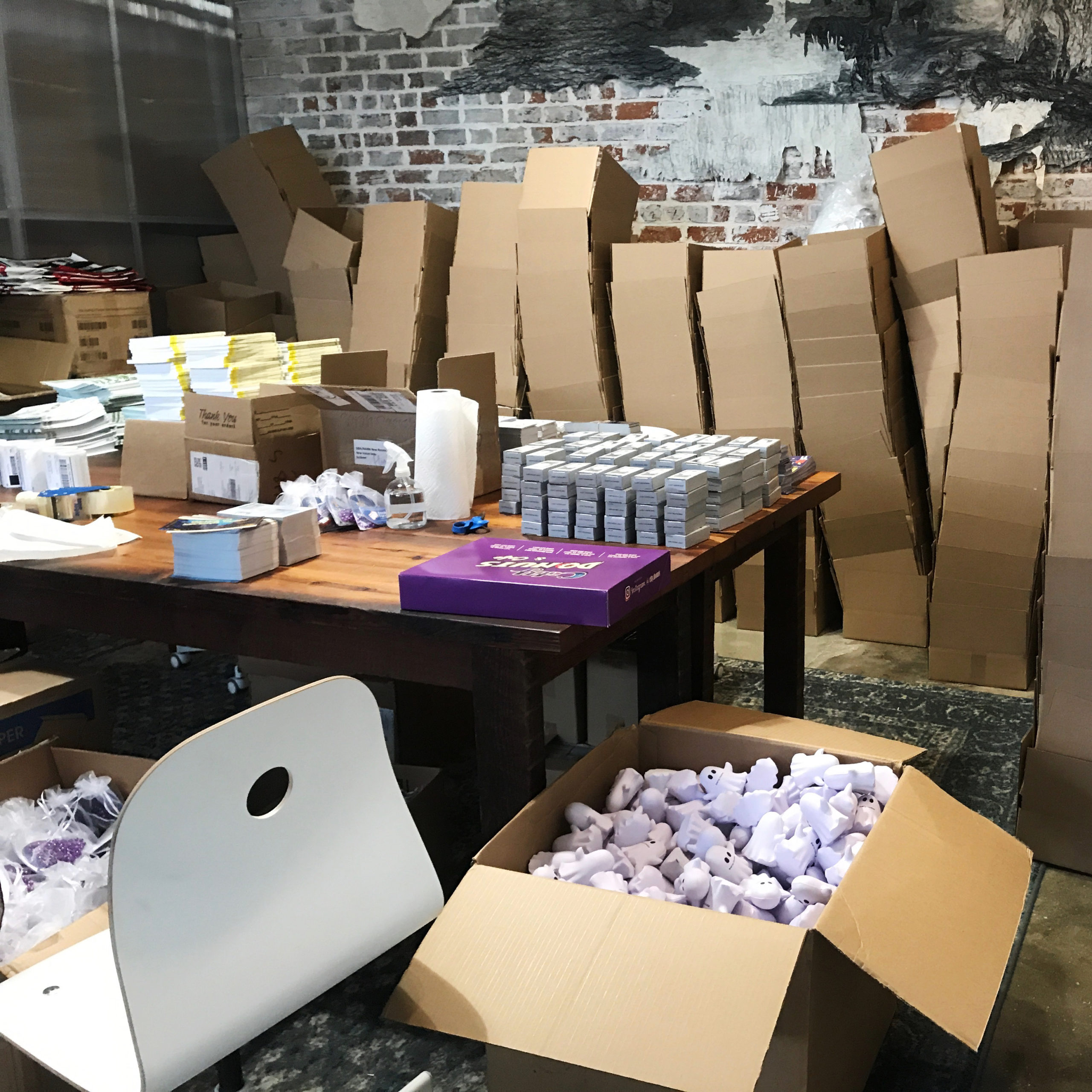 How do I know which booksellers are in attendance?
How do I know which booksellers are in attendance?
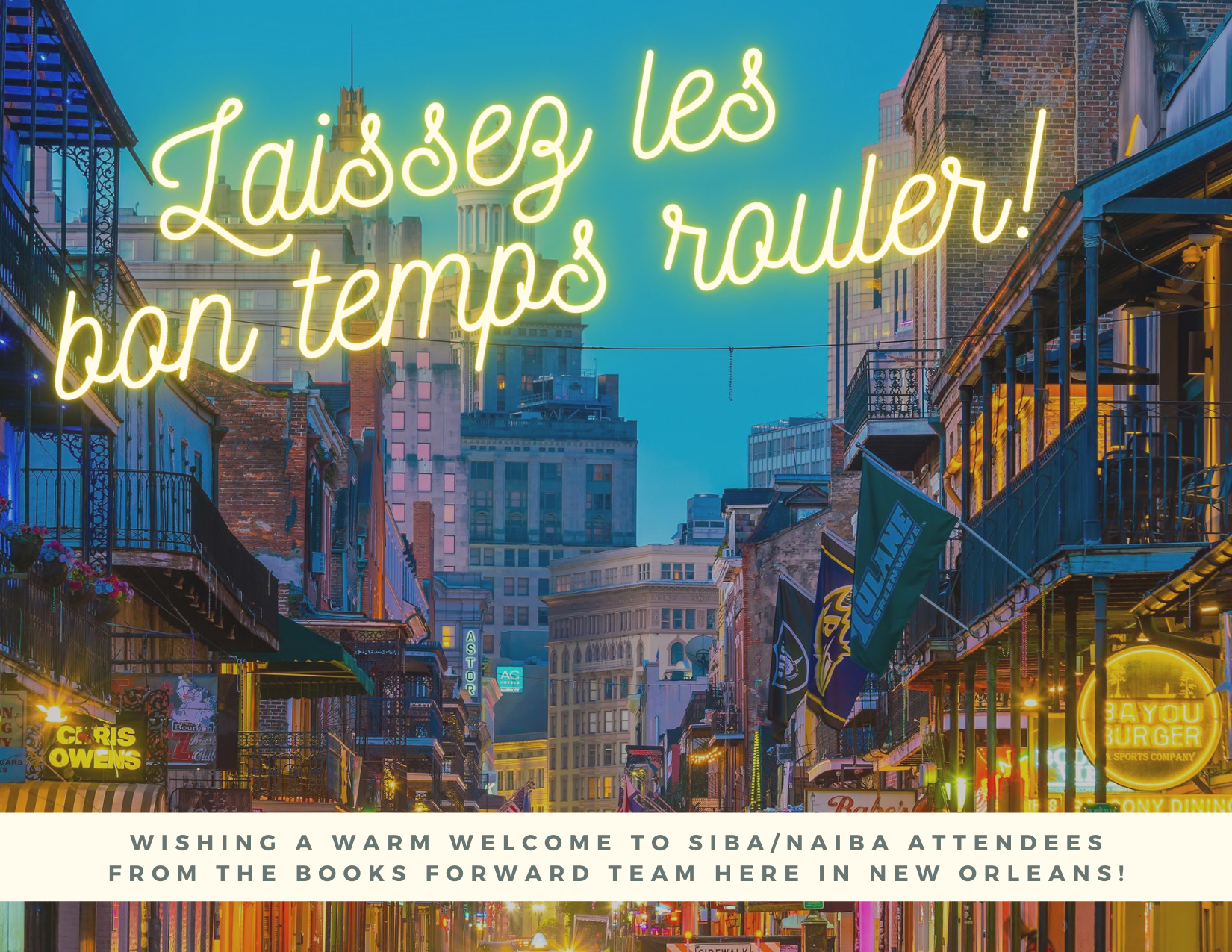

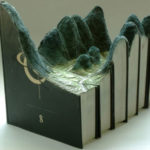
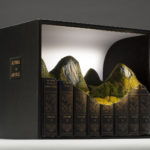

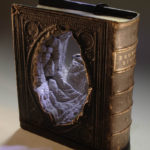
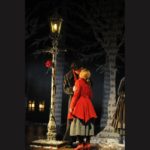


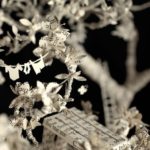


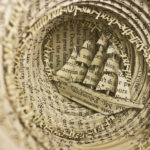
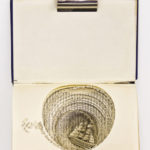
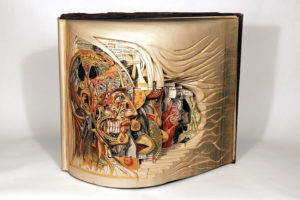
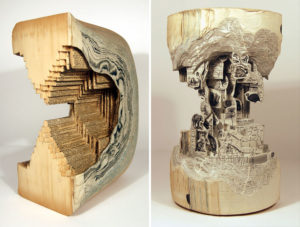
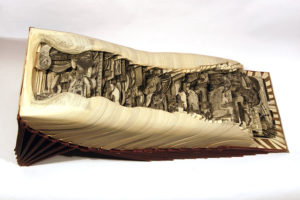

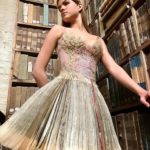
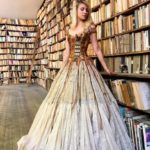
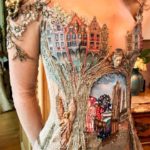
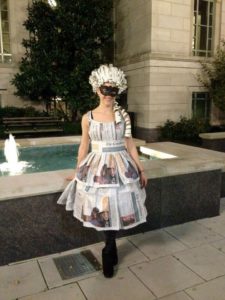

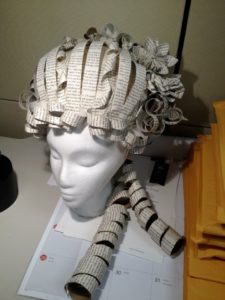

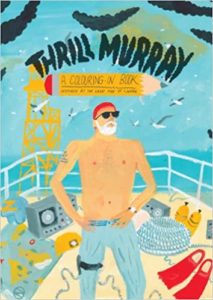
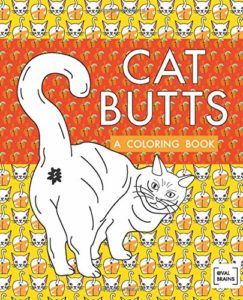
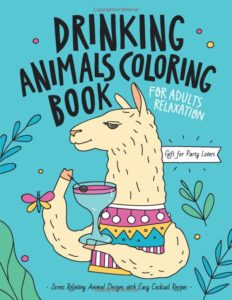
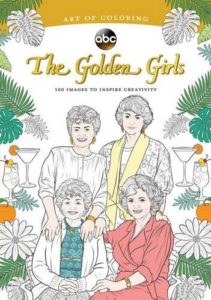
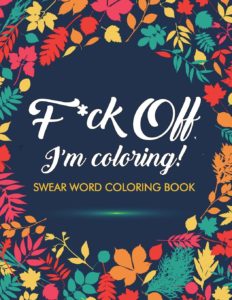
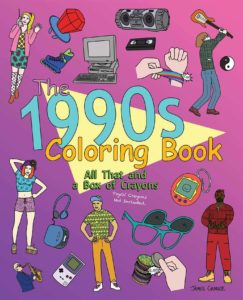

 Kick back with the girls and enjoy a drink that’s as sweet and sassy as the novel it’s paired with, which has been hailed as “the perfect beach read” that “makes the Real Housewives look like Girl Scouts.”
Kick back with the girls and enjoy a drink that’s as sweet and sassy as the novel it’s paired with, which has been hailed as “the perfect beach read” that “makes the Real Housewives look like Girl Scouts.”  Transport yourself with
Transport yourself with  This summer cocktail tastes delicious, but beware: the sweetest fruit has thorns, just as this heart-pounding suspense novel reveals when 20-year-old Tara escapes her abusive home life and joins her ideal virtual family–only to discover that “perfect” can be deceiving.
This summer cocktail tastes delicious, but beware: the sweetest fruit has thorns, just as this heart-pounding suspense novel reveals when 20-year-old Tara escapes her abusive home life and joins her ideal virtual family–only to discover that “perfect” can be deceiving.  This spicy citrus cocktail burns so good, just like this gripping debut thriller that weaves a twisting tale of romance, arson, and buried secrets set in a cabin deep in the New Hampshire woods.
This spicy citrus cocktail burns so good, just like this gripping debut thriller that weaves a twisting tale of romance, arson, and buried secrets set in a cabin deep in the New Hampshire woods.  Fresh Spanish sangria brimming with summer fruit is the perfect match for this delightful romantic comedy (with a touch of magical realism), which sends protagonist Callie on a life-changing adventure to Spain after she receives a mysterious phone call from Ernest Hemingway.
Fresh Spanish sangria brimming with summer fruit is the perfect match for this delightful romantic comedy (with a touch of magical realism), which sends protagonist Callie on a life-changing adventure to Spain after she receives a mysterious phone call from Ernest Hemingway.  This Prohibition-era classic is as refreshing and no-frills as it gets–and definitely a drink our tough-as-nails protagonist Jane would have swilled while posing as a man at her newspaper job in this Depression-era noir thriller.
This Prohibition-era classic is as refreshing and no-frills as it gets–and definitely a drink our tough-as-nails protagonist Jane would have swilled while posing as a man at her newspaper job in this Depression-era noir thriller.  This surprisingly light and fresh summer cocktail is a perfect match for this hysterical YA rom-com about Kate and Nate, two coworkers at a zombie-themed escape room who team up to compete in a survivalist weekend competition–but the real challenge will be keeping their hearts intact.
This surprisingly light and fresh summer cocktail is a perfect match for this hysterical YA rom-com about Kate and Nate, two coworkers at a zombie-themed escape room who team up to compete in a survivalist weekend competition–but the real challenge will be keeping their hearts intact.  It takes two to tango, and we’ve got the perfect pair: this citrusy-sweet cocktail straight from the Bellagio Resort & Casino in Las Vegas, and this delightful novel about a mom who runs off to Vegas with her therapist on a renegade girl’s trip.
It takes two to tango, and we’ve got the perfect pair: this citrusy-sweet cocktail straight from the Bellagio Resort & Casino in Las Vegas, and this delightful novel about a mom who runs off to Vegas with her therapist on a renegade girl’s trip.  It’s time to break out the tequila and trade stories about our exes as we dive into this laugh-out-loud (true!) story of Dani Alpert’s strangest break-up.
It’s time to break out the tequila and trade stories about our exes as we dive into this laugh-out-loud (true!) story of Dani Alpert’s strangest break-up.  Here’s a twist on the classic mint julep, and we’re oh-so-eager to dive into the twists of this eerie thriller about a woman who takes a job on a remote Maine island–and discovers nothing is at it seems.
Here’s a twist on the classic mint julep, and we’re oh-so-eager to dive into the twists of this eerie thriller about a woman who takes a job on a remote Maine island–and discovers nothing is at it seems.  I mean c’mon, how could we
I mean c’mon, how could we 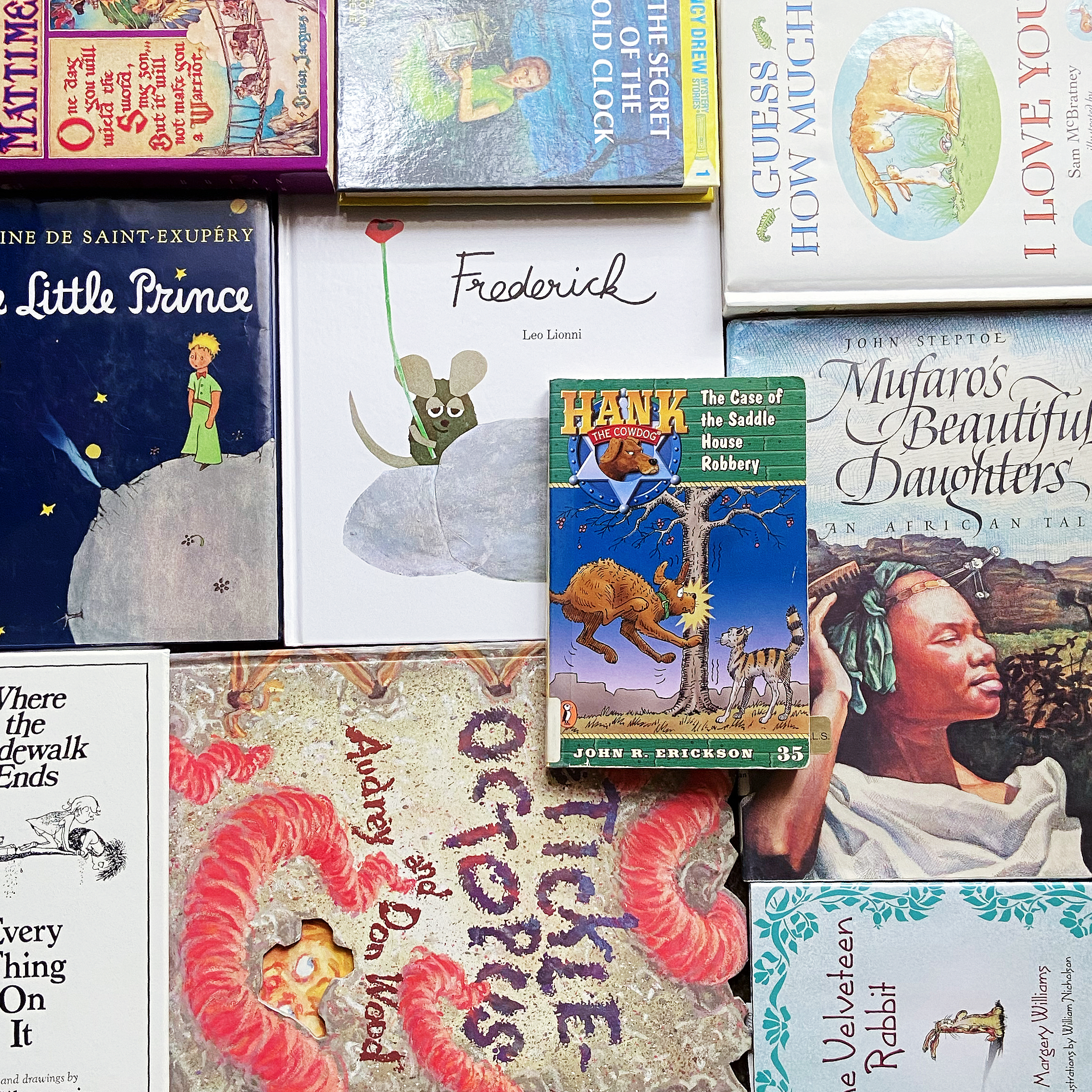
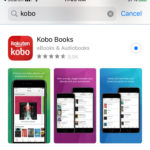
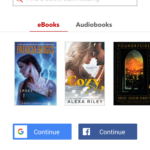
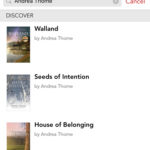
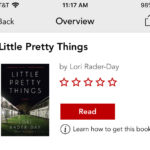
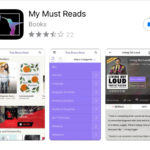
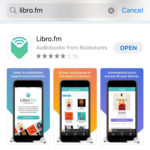


 In Spies of the Midnight Sun: A True Story of WWII Heroes, Book 3 of his WWII Series, historical fiction author Samuel Marquis recounts the courage and tenacity of female Norwegian Resistance operatives Dagmar Lahlum and Annemarie Breien in their efforts to defeat the Nazis, as well as the tragedy of their post-war lives.
In Spies of the Midnight Sun: A True Story of WWII Heroes, Book 3 of his WWII Series, historical fiction author Samuel Marquis recounts the courage and tenacity of female Norwegian Resistance operatives Dagmar Lahlum and Annemarie Breien in their efforts to defeat the Nazis, as well as the tragedy of their post-war lives.
